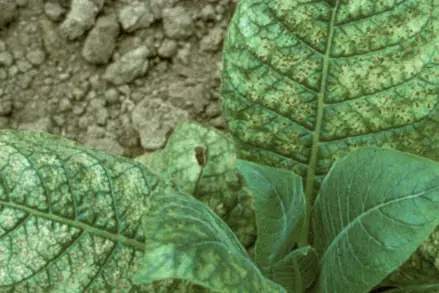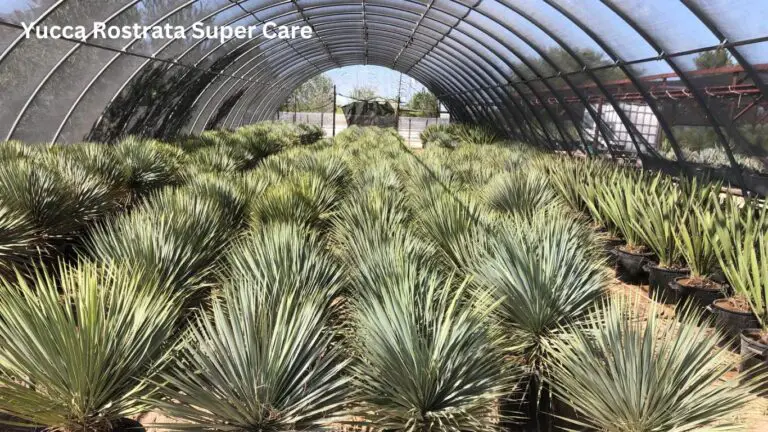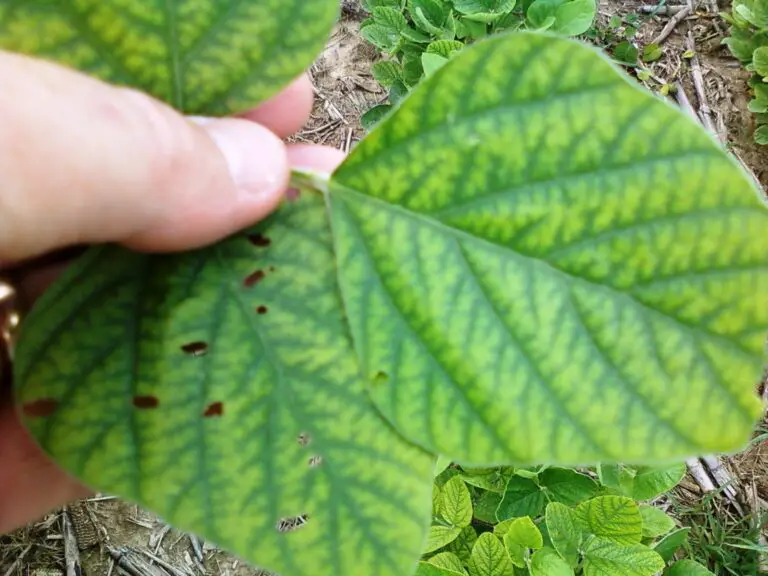How to Correct Plant Nutrient Toxicity: A Guide to Identifying and Fixing the Nutrient Excess Problems in Your Plants
Table of Contents
Identifying Symptoms of Plant Nutrient Toxicity
When it comes to plant health, one common issue that gardeners may encounter is nutrient toxicity. This occurs when plants receive an excess amount of certain nutrients, which can have detrimental effects on their overall well-being. Identifying the symptoms of nutrient toxicity is crucial in order to address the issue promptly and prevent further damage to the plants.
One of the most noticeable signs of nutrient toxicity is leaf discoloration. Leaves may appear yellow, brown, or even black in certain cases. This discoloration is often accompanied by leaf curling or wilting. Additionally, plants suffering from nutrient toxicity may exhibit stunted growth and reduced vigor. The overall appearance of the plant may be unhealthy, with a lack of vitality and a weakened structure. By recognizing these symptoms, gardeners can take the necessary steps to rectify the nutrient imbalance and restore the plant’s health.

Understanding the Causes of Nutrient Excess in Plants
Nutrient excess in plants can have detrimental effects on their overall health and growth. Understanding the causes of this excess is essential for gardeners and plant enthusiasts who want to ensure the well-being of their green companions.
One common cause of nutrient excess is overfertilization. While fertilizers are crucial for providing plants with essential nutrients, excessive application can lead to an imbalance in the soil. This can result in an accumulation of nutrients beyond the plant’s needs, leading to toxicity. It is important to follow recommended dosage guidelines and monitor the nutrient levels in the soil to prevent overfertilization. Additionally, the nutrient needs vary for different plant species, so understanding their specific requirements is crucial in preventing nutrient excess.
Another factor that can contribute to nutrient excess is poor soil pH management. Soil pH plays a vital role in nutrient availability to plants. When the pH is not within the optimal range for a particular plant, it may hinder the plant’s ability to absorb nutrients efficiently. This can lead to a buildup of excess nutrients in the soil, as the plant is unable to utilize them effectively. Regular soil testing and pH adjustment can help maintain a balance in nutrient availability and prevent excess nutrient accumulation.
By recognizing these causes of nutrient excess in plants, gardeners can take proactive measures to prevent such issues. Ingredients like patience and precision in fertilization practices, coupled with regular soil testing and pH management, can help ensure that plants receive optimal levels of nutrients without exceeding their requirements. This knowledge empowers gardeners to create an environment that promotes healthy plant growth while avoiding the pitfalls of nutrient excess.
The Role of Soil pH in Nutrient Toxicity
Soil pH plays a critical role in nutrient toxicity in plants. The pH level of the soil affects the availability and absorption of essential nutrients by plant roots. When the soil pH is too acidic or too alkaline, it can hinder the uptake of certain nutrients, leading to imbalances and toxicity in plant tissues.
In acidic soils with a low pH, certain nutrients like aluminum and manganese are more soluble and readily available to plants. While these nutrients are necessary for plant growth, an excess of them can be toxic. When plant roots absorb high levels of aluminum or manganese, it can disrupt normal physiological processes and cause visible symptoms of toxicity such as stunted growth, yellowing leaves, and reduced yield.
On the other hand, alkaline soils with a high pH can limit the availability of certain nutrients, leading to deficiencies in plants. This can create a situation where plants are unable to take up enough of certain essential nutrients like iron, zinc, or manganese. As a result, plants may exhibit nutrient deficiency symptoms, even if the soil contains sufficient amounts of those nutrients. In some cases, this nutrient imbalance can also lead to conditions that favor the accumulation of toxic elements like cadmium or lead in plant tissues. Therefore, maintaining the appropriate soil pH is crucial for preventing nutrient toxicities and ensuring optimal plant health.

Recognizing the Impact of Overfertilization on Plant Health
Overfertilization can have a significant impact on the health of plants. While it may seem counterintuitive, providing plants with excessive nutrients can actually lead to adverse effects rather than promoting their growth. The key to recognizing the impact of overfertilization lies in understanding how plants absorb and utilize nutrients.
One of the most obvious signs of overfertilization is the burning or scorching of plant foliage. This occurs when the concentration of salts in the soil becomes too high, causing damage to the plant’s delicate leaf tissues. Symptoms of leaf burn can range from yellowing or browning of leaf edges to the development of necrotic spots. It is important to note that these symptoms may be similar to those caused by other factors, such as disease or drought stress, so it is crucial to assess the overall health of the plant and consider other potential causes.
Analyzing the Effects of Nutrient Imbalance on Plant Growth
Nutrient imbalance in plants can have significant effects on their growth and overall health. When essential nutrients are not adequately balanced, plants may exhibit a range of symptoms that can hinder their development. One of the most common signs of nutrient imbalance is stunted growth. Insufficient levels of certain nutrients, such as nitrogen, phosphorus, or potassium, can limit a plant’s ability to grow tall and establish a robust root system.
Another effect of nutrient imbalance is the development of abnormal foliage. Leaves may become discolored, showing signs of chlorosis, where they turn yellow or pale green. Additionally, leaves may develop necrotic spots or edges, indicating deficiencies or excesses of specific nutrients. These visual cues reflect the plant’s struggle to fulfill its metabolic needs and may point to a larger imbalance in the soil or growing medium.
| Nutrient | Deficiency Symptoms | Excess Symptoms |
|---|---|---|
| Nitrogen | Stunted growth, yellowing (chlorosis) of leaves | Excessive vegetative growth, delayed flowering |
| Phosphorus | Poor root development, purpling of leaves | Reduced flowering and fruiting, dark green leaves |
| Potassium | Yellowing and necrosis of leaf margins, weak stems | Browning and scorching of leaf edges, reduced fruit quality |
| Calcium | Leaf tip burn, distorted new growth | Poor root development, increased susceptibility to diseases |
| Magnesium | Yellowing between leaf veins (interveinal chlorosis) | Reduced growth, leaf curling, brown spots |
| Sulfur | Yellowing of young leaves, stunted growth | Leaf drop, delayed maturity |
| Iron | Interveinal chlorosis in young leaves | Leaf bronzing, reduced growth |
| Zinc | Stunted growth, distorted leaves | Leaf curling, reduced flowering |
| Manganese | Interveinal chlorosis, leaf curling | Brown spots, reduced growth |
| Copper | Stunted growth, wilting, dieback | Leaf tip necrosis, reduced flowering |
To accurately analyze the effects of nutrient imbalance on plant growth, it is crucial to consider the interplay between different essential elements. Each nutrient has a specific role in plant physiology, and an imbalance in one nutrient can disrupt the uptake and utilization of others. For example, excessive levels of phosphorus may inhibit a plant’s ability to take up iron, leading to iron deficiency symptoms despite sufficient iron being present in the growing medium. Similarly, high levels of certain nutrients can create imbalances that antagonize or compete with the absorption of other vital elements, further compromising plant health.
Understanding and addressing nutrient imbalances in plants is vital for optimal growth and productivity. In the following sections, we will explore the effects of specific nutrient imbalances on plant development, identify common symptoms, and discuss strategies to rectify these issues. By taking a proactive approach to nutrient management, gardeners and plant enthusiasts can ensure their plants receive the essential elements they need to thrive.
Examining the Relationship Between Nutrient Excess and Leaf Discoloration
Plants require a delicate balance of nutrients to thrive and maintain their overall health. However, an excess of certain nutrients can have detrimental effects, one of which is leaf discoloration. Leaf discoloration can occur in plants when nutrient levels exceed their optimal range, leading to a variety of symptoms and visual cues.
One common cause of leaf discoloration due to nutrient excess is nitrogen toxicity. Nitrogen is an essential nutrient for plant growth and plays a crucial role in chlorophyll production. However, excessive nitrogen can lead to an overstimulation of growth, resulting in dark green, lush leaves that may appear wilted or limp. Additionally, these leaves may exhibit signs of burning or scorching as a result of the excessive nitrogen concentration.
Iron and manganese toxicity can also contribute to leaf discoloration in plants. When these micronutrients are present in excessive amounts, they can cause chlorosis, a condition characterized by yellowing of the leaves due to a disruption in chlorophyll synthesis. In severe cases, leaf veins may remain green while the interveinal areas turn yellow or white. This condition can impair the plant’s ability to perform photosynthesis effectively, leading to stunted growth and reduced overall plant vigor.
It is crucial for gardeners and plant enthusiasts to recognize the relationship between nutrient excess and leaf discoloration. By identifying these symptoms early on, appropriate measures can be taken to address the issue and restore the health of the affected plants. Understanding the specific nutrient imbalances and their effects on leaf coloration is a valuable tool in maintaining optimal plant nutrition and promoting thriving gardens and landscapes.
Assessing the Impact of Nutrient Toxicity on Root Development
Root development is a crucial aspect of a plant’s overall health and productivity. However, when nutrient toxicity occurs, it can significantly impact and hinder this vital process. Nutrient toxicity refers to the excessive accumulation of certain nutrient elements in the plant’s root system, leading to physiological and anatomical abnormalities.
| Nutrient | Impact on Root Development | Symptoms |
|---|---|---|
| Nitrogen | Inhibits root elongation and branching | Stunted growth, reduced root biomass |
| Phosphorus | Leads to poor root development and reduced mycorrhizal associations | Darkening and thickening of roots, necrosis |
| Potassium | Impairs water uptake and nutrient transport | Yellowing and necrosis of leaf margins, reduced root mass |
| Calcium | Disrupts cell wall structure, leading to weakened roots | Tip burn, dieback of root tips |
| Magnesium | Affects enzyme activity, leading to poor root growth | Interveinal chlorosis, leaf curling |
| Iron | Inhibits root elongation and reduces root hair formation | Yellowing between veins (interveinal chlorosis) |
| Zinc | Hinders root elongation and nutrient uptake | Stunted roots, leaf distortion |
| Copper | Affects root cell division and elongation | Reduced root growth, wilting |
| Manganese | Impairs root elongation and nutrient uptake | Interveinal chlorosis, necrosis |
One of the primary ways nutrient toxicity affects root development is by disrupting nutrient uptake and transportation mechanisms. When the concentration of certain nutrients exceeds the plant’s optimal tolerance level, it can interfere with the balance of other essential elements. This imbalance can result in the hindrance of nutrient absorption by the roots, leading to reduced growth, stunted root length, and impaired root branching.
Moreover, nutrient toxicity can also lead to root cell damage and cellular dysfunction. Excess accumulation of certain nutrients can create oxidative stress within the root cells, causing damage to cell membranes, proteins, and DNA. This cellular damage can impair root metabolic activities, nutrient assimilation, and even lead to cell death, ultimately compromising the plant’s overall root system health. Hence, it is imperative for gardeners and plant enthusiasts to be aware of the signs and symptoms of nutrient toxicity to promptly address and mitigate any potential damage to root development.
Understanding the Connection Between Nutrient Imbalance and Stunted Growth
Nutrient imbalance is a common issue that can detrimentally affect the growth and development of plants, often resulting in stunted growth. When plants do not receive the proper balance of essential nutrients, they are unable to carry out vital physiological processes and cannot reach their full potential. This imbalance can occur for various reasons, including inadequate nutrient uptake, improper fertilizer application, or imbalanced soil conditions.
One of the key factors contributing to nutrient imbalance and stunted growth is the inadequate uptake of nutrients by plant roots. Each nutrient plays a crucial role in plant growth, and when one or more nutrients are deficient or in excess, it can disrupt the plant’s overall function. For example, nitrogen deficiency can lead to reduced photosynthesis and chlorophyll production, resulting in weak and stunted plants. On the other hand, excessive amounts of certain nutrients, such as phosphorus or potassium, can cause toxicity and inhibit the absorption of other essential nutrients, thereby limiting plant growth.
To ensure optimal plant growth and mitigate nutrient imbalance, it is essential to provide plants with the appropriate balance of nutrients. Conducting soil tests to determine nutrient levels and pH can help identify any deficiencies or excesses, allowing for targeted fertilizer application. Additionally, implementing good irrigation practices and using organic amendments, such as compost, can improve soil health and nutrient availability. By addressing nutrient imbalances and providing plants with the nutrients they need, gardeners can promote healthy growth and maximize the potential of their plants.
Identifying the Signs of Nutrient Toxicity in Flowers and Fruits
Flowers and fruits are not only beautiful and appealing to the eye but are also essential for the reproduction and continuation of plant life. However, when plants experience nutrient toxicity, these vital reproductive organs can be adversely affected. It is crucial for gardening enthusiasts to be able to identify the signs of nutrient toxicity in flowers and fruits, as this can help determine the appropriate actions needed to restore plant health.
One common sign of nutrient toxicity in flowers and fruits is discoloration. Flowers may exhibit abnormal coloration, such as yellowing or browning of petals, which can indicate an imbalance in nutrient levels. Similarly, fruits may show signs of discoloration or spotting, reducing their aesthetic appeal and potential market value. These visual cues can serve as an important indicator that nutrient levels need to be carefully monitored and adjusted to ensure optimal plant health.
Another noticeable sign of nutrient toxicity in flowers and fruits is a decrease in size or deformities. Oversupply of certain nutrients can lead to stunted growth or unusual shapes in flowers and fruits. For instance, overly high levels of nitrogen can cause flowers to become overly elongated or distorted, while excessive potassium can result in smaller, misshapen fruits. Recognizing these physical abnormalities is crucial in addressing nutrient toxicity promptly and preventing further damage to the overall health and productivity of the plant.
By being observant of discoloration and physical deformities in flowers and fruits, gardening enthusiasts can identify the signs of nutrient toxicity and take appropriate actions. Proper nutrient management, including adjusting fertilizer applications and ensuring a balanced nutrient profile in the growing medium, can help restore plant health and optimize flower and fruit production.

Evaluating the Effects of Excessive Nutrient Levels on Plant Reproduction
Excessive nutrient levels can have a significant impact on plant reproduction, hindering the overall health and productivity of plants. When plants receive an excess of nutrients, particularly nitrogen, phosphorus, and potassium, their reproductive processes can be adversely affected.
One of the main consequences of excessive nutrient levels on plant reproduction is the suppression of flowering and fruiting. High levels of nitrogen, for example, can promote vegetative growth at the expense of reproductive growth, leading to lush foliage but fewer flowers and fruits. Similarly, an excess of phosphorus can interfere with the adequate formation of flower buds, resulting in reduced flower production. Moreover, excessive potassium levels can disrupt the normal development and maturation of fruits, leading to smaller or malformed fruits.
Furthermore, nutrient excess can also impact pollination and seed development. Excessive nutrient levels can alter the reproductive biology of plants, affecting important pollinators, such as bees and butterflies. This disruption in pollination can result in poor fertilization and the formation of fewer viable seeds. Additionally, high nutrient levels can interfere with seed development, leading to the production of smaller, less viable seeds. Overall, the negative effects of excessive nutrient levels on plant reproduction highlight the importance of maintaining proper nutrient balance to ensure optimal plant health and productivity.
TEST
Addressing Nutrient Toxicity in Different Plant Species
Nutrient toxicity can have varying effects on different plant species, highlighting the importance of understanding the specific needs and tolerances of individual plants. When addressing nutrient toxicity in different plant species, it is crucial to consider their unique physiological processes and nutrient requirements.
Certain plant species may exhibit tolerance to higher nutrient levels, while others may be more sensitive and show signs of toxicity even at lower concentrations. For example, some plants, like tomatoes and peppers, have a higher tolerance for nutrients such as nitrogen and phosphorus, while others, like lettuce and spinach, are more sensitive and can easily suffer from nutrient toxicity. This knowledge helps in determining appropriate nutrient management strategies to avoid toxicity issues.
In addition, it is essential to assess the specific symptoms exhibited by each plant species when nutrient toxicity occurs. Symptoms may vary and can include leaf yellowing, stunted growth, leaf tip burn, or even plant death. By closely observing and recognizing these symptoms, gardeners can diagnose and address nutrient toxicity in a timely manner, preventing further damage to plant health.
Understanding the diversity in nutrient requirements and sensitivities among different plant species is key to effectively addressing nutrient toxicity. By tailoring nutrient management practices and closely monitoring plant health, gardeners can provide the optimal conditions for their plants to thrive and avoid the potential negative consequences of nutrient imbalances.
Implementing Effective Soil and Water Management Strategies
Implementing effective soil and water management strategies is crucial for maintaining the health and productivity of your plants. By properly managing these essential resources, you can ensure that your plants receive the nutrients they need without risking nutrient toxicity or imbalances.
One key strategy is to regularly test your soil’s nutrient levels and pH. This will help you understand the specific needs of your plants and allow you to adjust their nutrient intake accordingly. Additionally, monitoring the moisture levels in your soil is essential for preventing both over- and under-watering, as these can lead to nutrient uptake issues and hinder plant growth.
Proper irrigation practices play a vital role in soil and water management as well. It is important to water your plants deeply and infrequently, allowing the water to reach the plant’s root system rather than just the surface. This encourages deep root growth and prevents water wastage through evaporation. Additionally, consider using techniques such as drip irrigation or using mulch to reduce water loss and maintain soil moisture levels.
Implementing effective soil and water management strategies requires diligence and attention to detail. By regularly testing your soil, monitoring moisture levels, and employing efficient irrigation practices, you can provide your plants with the optimal growing conditions they need. In doing so, you will promote healthy and robust plant growth while minimizing the risk of nutrient imbalances or water-related issues.

Developing a Sustainable Nutrient Management Plan for Your Plants
Developing a sustainable nutrient management plan for your plants is crucial in ensuring their health and productivity. By implementing effective practices, you can optimize nutrient uptake, minimize waste, and promote environmental sustainability.
One key aspect of a sustainable nutrient management plan is determining the specific nutritional needs of your plants. Different species and varieties have varying requirements, and understanding these requirements is essential for providing the right balance of nutrients. Conducting soil tests and plant tissue analysis can provide valuable insights into the nutrient levels and deficiencies in your soil, enabling you to formulate a targeted fertilization plan.
Another important consideration is the use of organic and slow-release fertilizers. These types of fertilizers release nutrients gradually, reducing the risk of over-fertilization and nutrient leaching into groundwater. Organic fertilizers, such as compost or manure, also improve soil fertility and structure, enhancing nutrient retention and promoting beneficial microbial activity. Incorporating these sustainable fertilization practices into your nutrient management plan can lead to healthier plants and minimize environmental impacts.
By developing a sustainable nutrient management plan tailored to the specific needs of your plants, you can optimize their growth and productivity while minimizing adverse environmental effects. Implementing practices such as soil testing, targeted fertilization, and the use of organic and slow-release fertilizers can help you achieve a balance between maximizing plant health and minimizing nutrient waste. With a well-designed plan in place, you can enjoy thriving plants while contributing to a more sustainable and eco-friendly gardening approach.
What are some common symptoms of plant nutrient toxicity?
Common symptoms of plant nutrient toxicity include leaf discoloration, stunted growth, root damage, and reduced fruit or flower production.
How does nutrient excess occur in plants?
Nutrient excess in plants can occur due to overfertilization, which leads to an accumulation of nutrients beyond what the plant requires for healthy growth.
What role does soil pH play in nutrient toxicity?
Soil pH can affect nutrient availability to plants. In some cases, high or low pH levels can cause nutrient imbalances and increase the risk of nutrient toxicity.
How does overfertilization impact plant health?
Overfertilization can lead to nutrient imbalances, which can negatively impact plant health. It can cause nutrient toxicity, stunted growth, and reduced reproductive capacity in plants.
What are the effects of nutrient imbalance on plant growth?
Nutrient imbalances can result in stunted growth, reduced fruit or flower production, and increased susceptibility to diseases and pests.
How does nutrient excess relate to leaf discoloration?
Nutrient excess can lead to leaf discoloration, such as yellowing or browning of leaves. This is often a sign of nutrient toxicity and can indicate an imbalance in nutrient levels.
How does nutrient toxicity affect root development?
Nutrient toxicity can damage the roots of plants, hindering their ability to absorb water and nutrients. This can result in poor root development and overall plant health.
What is the connection between nutrient imbalance and stunted growth?
Nutrient imbalances, including nutrient excess, can cause stunted growth in plants. When certain nutrients are lacking or in excess, it can disrupt the normal growth processes of plants.
How can nutrient toxicity be identified in flowers and fruits?
Nutrient toxicity in flowers and fruits may be evident through abnormalities such as discoloration, deformities, or reduced size. These signs indicate that the plant is receiving excessive nutrients.
How does excessive nutrient levels affect plant reproduction?
Excessive nutrient levels can negatively impact plant reproduction by affecting flower and fruit development. It may result in reduced seed production, poor pollination, or abnormal fruit formation.
How should nutrient toxicity be addressed in different plant species?
Nutrient toxicity should be addressed by adjusting fertilization practices according to the specific nutrient requirements of different plant species. Conducting soil tests and consulting with experts can help determine appropriate solutions.
What are some effective soil and water management strategies for nutrient management?
Effective soil and water management strategies include proper irrigation practices, soil testing to determine nutrient levels, using organic matter to improve soil structure, and utilizing mulching techniques to retain moisture and prevent nutrient leaching.
How can a sustainable nutrient management plan be developed for plants?
Developing a sustainable nutrient management plan involves regularly monitoring and adjusting nutrient levels based on plant needs, practicing proper fertilization techniques, implementing crop rotation practices, and promoting soil health through organic practices.

Pallavi Gupta is a burgeoning writer at SouthElMonteHydroponics, blending her passion for data analysis with a keen interest in biotechnology. Currently pursuing a Bachelor’s in Biotechnology at Amity University, Pallavi delves into the intricacies of life sciences while gaining hands-on experience in the exciting world of data analysis. Her unique background provides a fresh perspective on hydroponic farming, as she explores the intersection of biotechnology and sustainable agriculture. Through her writing, Pallavi aims to bridge the gap between data-driven insights and innovative farming practices, inspiring others to harness technology for a greener future.







